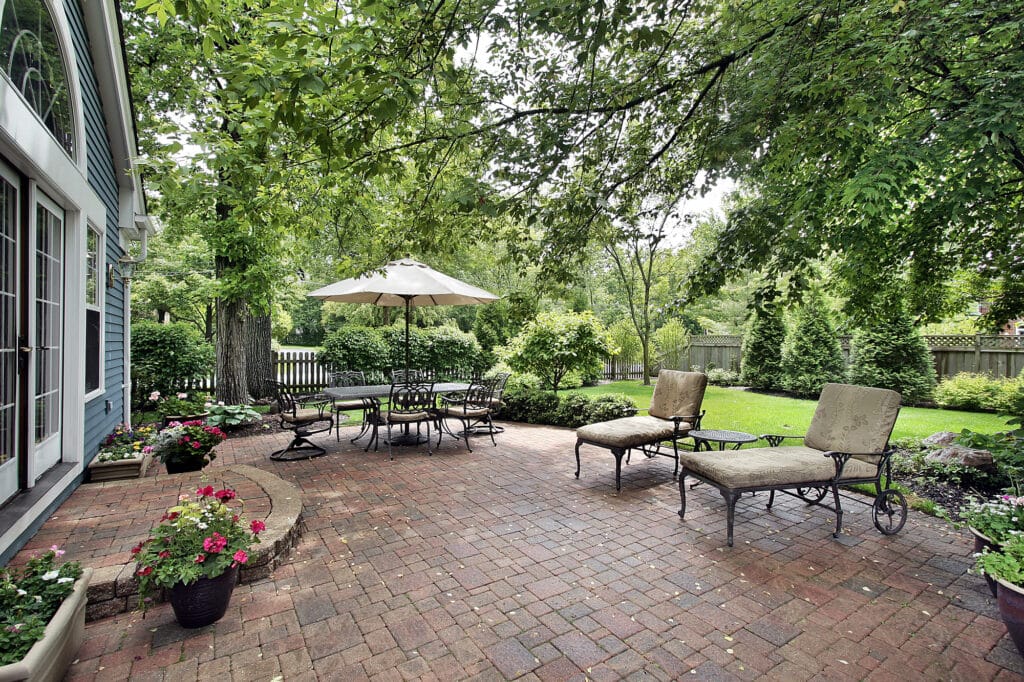
A patio is an essential part of any outdoor living space. It serves as an extension of your home, providing a comfortable and functional space for relaxing, entertaining, and enjoying the great outdoors. When planning or renovating your patio, one of the most important decisions you will need to make is selecting the right materials. Patio materials come in a wide variety of options, each with unique features, benefits, and considerations. In this guide, we will explore some of the most popular patio materials and provide you with all the information you need to make an informed decision.
1. Concrete
Concrete is one of the most commonly used patio materials due to its durability, versatility, and cost-effectiveness. It can be poured or stamped into various shapes and patterns, which allows for endless design possibilities. Concrete patios are low maintenance, easy to clean, and resistant to wear and tear. They can be tinted or stained to mimic the look of other materials, such as stone or brick. While plain concrete can be prone to cracking and discoloration over time, there are options available to mitigate these issues, such as using high-quality sealants or adding a textured finish.
2. Pavers
Pavers are another popular choice for patio materials. They are individual units made from various materials such as concrete, brick, or natural stone. Pavers offers a wide range of shapes, sizes, colors, and patterns, allowing for a more customized look that suits your personal style. One of the main advantages of pavers is their ease of installation. They can be laid on a sand or gravel base without the need for specialized tools or equipment. Pavers are also relatively low maintenance and can be easily replaced if damaged or stained. However, they may require occasional re-leveling to ensure a stable surface.
3. Natural Stone
If you’re looking for a patio material that exudes elegance and natural beauty, then natural stone is an excellent choice. Stone options include flagstone, slate, limestone, and granite, among others. Each type of stone has its own unique texture, color, and durability characteristics. Natural stone patios offer a timeless appeal and can blend seamlessly into any outdoor setting, from traditional to modern. However, they tend to be more expensive than other materials and may require professional installation due to their weight and irregular shape. Additionally, natural stone can be porous and may require regular sealing to prevent staining or erosion.
4. Wood
Wooden patios add a warm and inviting touch to any outdoor space. They are particularly popular for creating a cozy and rustic atmosphere. Common wood options for patios include cedar, redwood, and pressure-treated pine. Wood patios are relatively easy to install, especially if using pre-made deck tiles or interlocking panels. However, they require regular maintenance and refinishing to prevent rot, splintering, or fading from UV exposure. The longevity of a wood patio also depends on the specific type of wood used and the climate in which it’s located.
6. Composite Decking
This type of deck has gained popularity in recent years thanks to its low maintenance and durability. Composite Decking is made from a blend of recycled plastic and wood fiber materials. Composite decks mimic the natural look of wood while offering enhanced resistance to rot, insects, and fading. They do not require regular staining or sealing like traditional wood decks and are available in a range of colors and finishes. Composite decking can be more expensive upfront than wood, but the long-term savings in maintenance costs often make it a worthwhile investment.
7. Gravel
Gravel is a cost-effective and easy-to-install option for patio materials. It offers a casual and versatile look that complements various outdoor styles. Gravel patios can be created by simply spreading and compacting gravel over a leveled surface. They allow for excellent drainage, making them suitable for rainy climates. However, gravel patios require periodic re-leveling and can be challenging to walk on for those with mobility issues. Adding a border or edging around the gravel can help contain it and prevent spreading.
8. Tile
Tile patios provide a sleek and polished appearance that works well in modern or Mediterranean-style outdoor spaces. Tiles come in a wide range of materials, including ceramic, porcelain, and natural stone. They are durable, easy to clean, and resistant to staining. Tile patios can be laid directly on a concrete base or installed on a mortar bed for added stability. It’s important to select tiles that are specifically designed for outdoor use so they can withstand outdoor conditions and temperature fluctuations.
9. Bricks
Brick patios offer a classic and timeless look that never goes out of style. Bricks come in various sizes, colors, and shapes, allowing for different design possibilities, such as herringbone or basketweave patterns. They are durable, low maintenance, and provide excellent slip resistance. However, brick patios may require professional installation, especially if you opt for complex patterns or want a level surface. Bricks can also fade over time, so it’s important to choose high-quality bricks that are resistant to weathering.
Read: 7 Deck and Patio Ideas for Your Home
When choosing patio materials, there are several factors to consider:
Budget:
Determine how much you are willing to pay for your patio project and allocate the budget accordingly. Certain materials, such as high-end or natural stone composites, are generally more expensive than others.
Durability:
Consider the longevity and durability of the materials. Some options may require more maintenance or be more prone to damage than others, depending on your climate and intended use.
Style:
Think about the overall style and aesthetic you want to achieve with your patio. Consider how the materials will complement your home’s architecture and other outdoor elements.
Functionality:
Evaluate the practicality of the materials, taking into account factors such as slip-resistance, ease of cleaning, and comfort underfoot.
Climate and Environment:
Consider your local climate and environmental conditions. Some materials may be better suited to specific climates or perform better in certain conditions, such as high humidity or extreme temperatures.
Maintenance:
Assess the level of maintenance the materials require. Some options may need regular cleaning, sealing, or refinishing to keep them in good condition.
Eco-Friendly:
If sustainability is a priority for you, look for patio materials that are made from recycled or renewable materials and have minimal environmental impact.
Before making a final decision, it’s recommended to consult with a landscape designer or professional contractor since they will be able to guide you based on your specific needs, preferences, and budget. They can also provide valuable insight into the suitability and feasibility of different patio materials for your particular project.
Read: Deck Vs Patio: Which is Better for Your Home?
In conclusion, patio materials come in different varieties, each with its own unique features, benefits, and considerations. Concrete, pavers, natural stone, wood, composite decking, gravel, tile, and bricks are popular choices for creating functional and aesthetically pleasing outdoor living spaces. When selecting patio materials, consider factors such as budget, durability, style, functionality, climate, maintenance, and eco-friendliness. By weighing these factors and seeking expert advice when needed, you can choose the perfect patio materials that will enhance your outdoor living experience for years to come.
